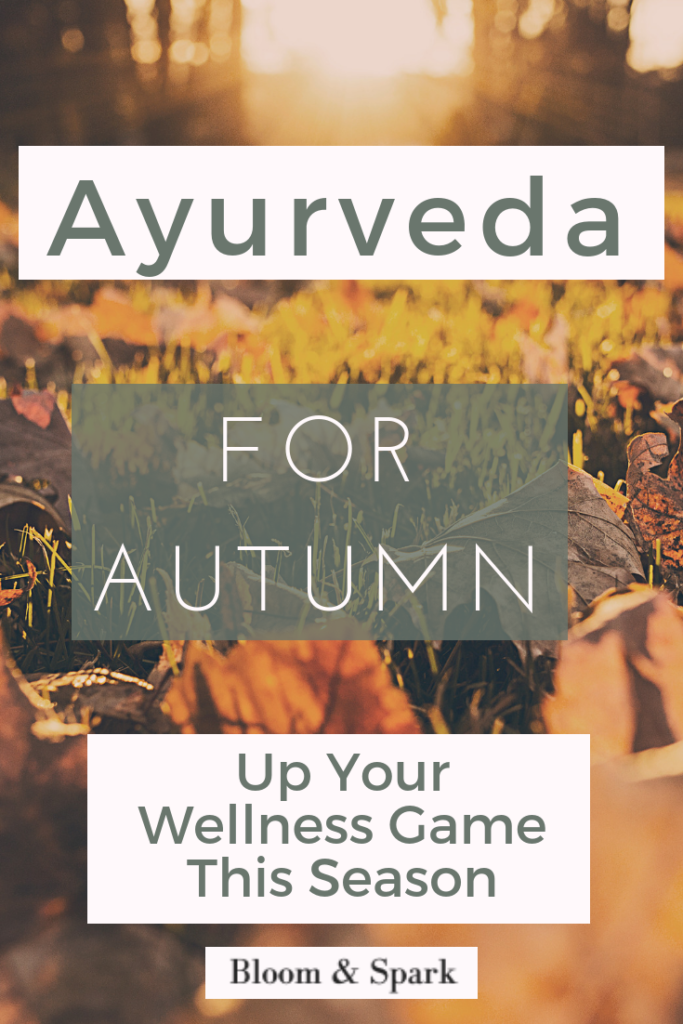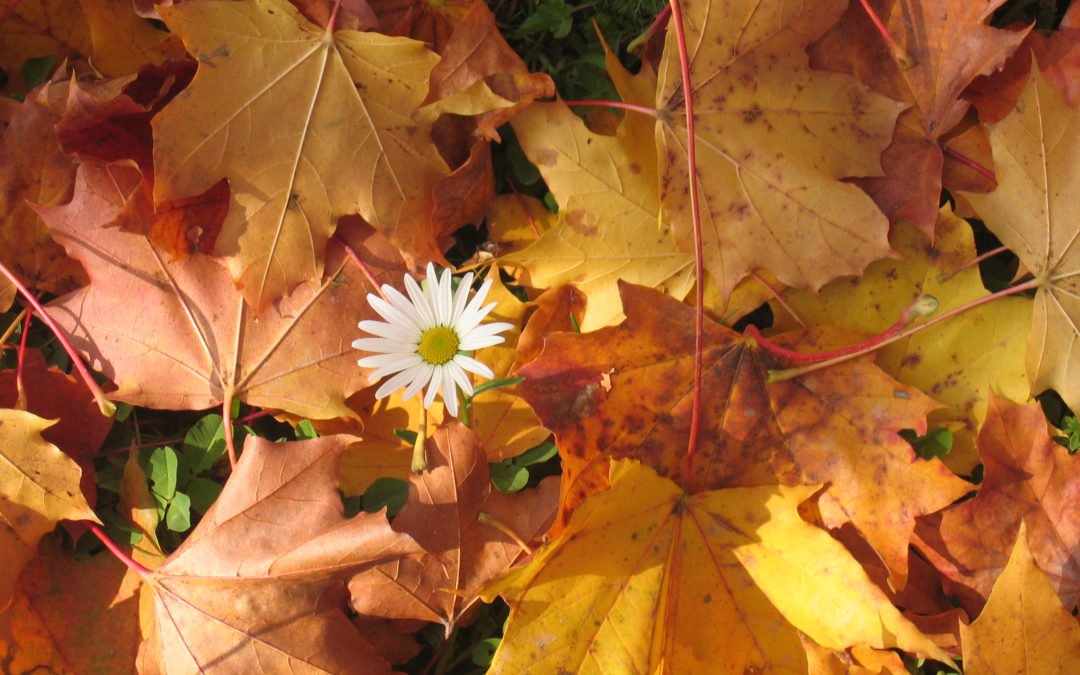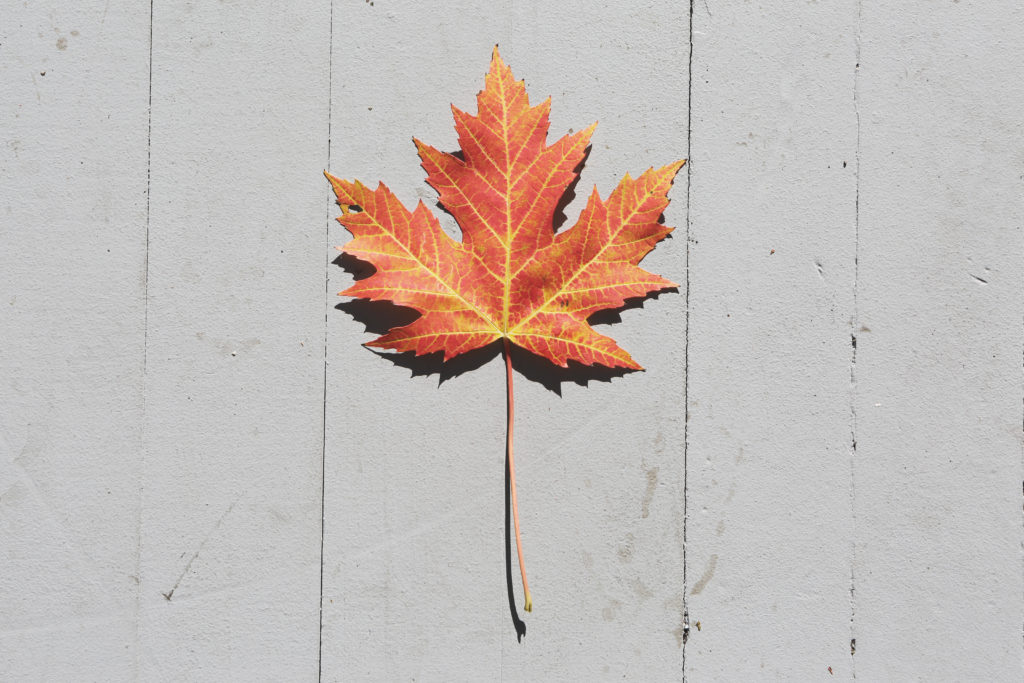I love talking about how to use Ayurvedic techniques, especially when it comes to the seasons. So I am super pumped to share about Ayurveda for autumn. If you’re like most of us around here this may be the first time you’ve heard of the term “Ayurveda.” So if you are not familiar with the Ayurvedic philosophy and traditions go check out my post Ayurveda 101.
Knowing Ayurvedic techniques for autumn is key in maintaining your health this time of year. Everywhere you look, transition is occurring. In nature, trees are letting go of their leaves, in preparation for winter. There’s a gentle slowing down of growth and a cooling of temperatures. Even our daily routines slow down. More time is spent indoors and under blankets; craving warmth and protection from the elements. The windy and dry qualities of this season are a hallmark of fall. We innately savor the time where we can experience the simplicity and quiet essence of the season.
What is “Vata Season?”
Late fall and winter are known in ayurveda as “vata season” because they are marked by some of the same qualities that characterize vata dosha: cold, dry, light, clear, and moving. Fall is dominated by the element air. The qualities of nature are windy, dry and cool. Since there is an abundance of vata energy this time of year, it’s beneficial to take steps to balance the excess vata this fall so we can maintain our wellbeing.
Signs of excess vata:
- Increased anxiety/unsettledness
- Bothered by cold and wind
- Poor sleep
- Excess stimulation is bothersome–i.e. crowds and loud noises
- Bloating and gas
- Dry skin and hair
- Feeling disorganized and overwhelmed
- Inability to sit still
Why adopt a seasonal routine?
As the external environment changes, it also increases the vata energy in our internal environment. Noticing the qualities of the season can empower you to seek balance from the fluctuations in climate.
We already do this without knowing it. In the winter we like to cuddle up by a fire and eat warming, hearty foods to counter the cold, raw qualities in nature. In the summer we love salads, watermelon and more cooling foods. Spring and Fall are times of change; either a slowing down or a revving up in growth.
So, it’s innate to offset seasonal imbalances with our routines. Practitioners of ayurveda have been studying the season’s affect on our bodies for thousands of years. It’s our way to protect our own wellbeing in the different environmental extremes.
When we have these qualities in balance we are healthy, vibrant and energetic. In Ayurveda, having a seasonal routine helps you gain some equilibrium and enhance your wellbeing all year long. It’s also important to know your personal constitution (pita, vata, kapha) when designing your seasonal routines. Always keeping balance in mind.
In Ayurveda, like enhances like, therefore balance is the key when the climate changes. In the cold winter months we don’t want to eat cold, airy foods like salads because it would increase the “vata” energy. Therefore, we balance these qualities with it’s opposite. If fall is vata season (characterized by dry, cool, air, and movement) we balance that with routines that help us find more warmth and grounding.
It actually makes a lot of sense and you’ve probably done some of this already just purely instinctively
Top Ayurveda Tips for Autumn:
Food:
- Your diet is the best way to counter vata imbalances this fall. Eat foods that are substantial, cooked, warming, and soothing. Meals high in protein, fat and oil are recommended this time of year.
- Spices that are warming, savory and grounding are best added to these meals.
- Warm foods seem obvious, therefore roasted or sautéed seasonal vegetables are ideal.
- Breakfasts like oatmeal and other cooked grains are great.
- Enjoy more sweet, sour, and salty tastes, while avoiding bitter, astringent, and pungent tastes.
- Lunch and dinner may include seasonal vegetables that are seamed, roasted or sautéed, paired with hearty grains and stews which can be grounding and moisturizing.
- Overall try to reduce foods that are raw, cold, light, and dry this season such as raw vegetables, dry cereal, cold sandwiches, crackers, chips, popcorn, and dried fruit.
- Drink lots of warming liquids like tea to balance the cool and dry qualities of vata season.
Exercise:
- Keep your yoga and fitness routines grounding and warming.
- Weightlifting naturally feels grounding to our bodies.
- A yoga sequence focused on poses that ground the body are essential.
- Cardio to build strength and heat will help balance cool energy.
- Whatever you do, movement is key in keeping the body warm, however too much movement can aggravate vata so be mindful of vata aggravating workouts like outdoor cycling or running.
Daily Routines:
- Make sure you are warm and hydrated to balance the cool and dry nature of the season. Extra layers, warm baths, and a humidifier are your best friend.
- Vata is aggravated my moving air, so avoiding drafty rooms or fans is helpful.
- Massage oil into your skin after the shower.
- A grounding meditation practice can help pacify excess vata that increases anxiety and ceaseless thoughts.
- Check out a whole post I created on self care for the fall
(opens in a new tab)
Like this? Share it with a friend!






